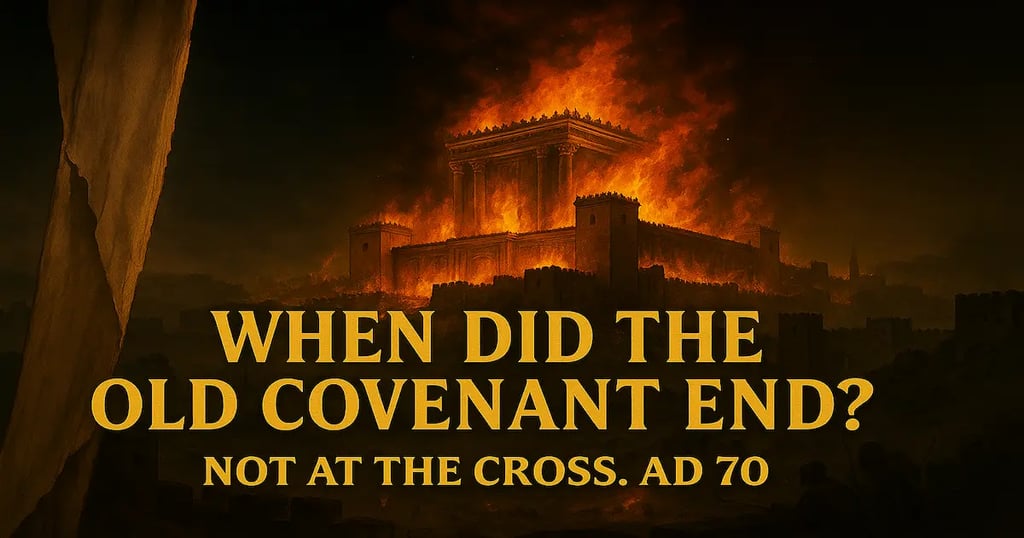The Old Covenant Didn’t Die at the Cross. It Burned in AD 70
8/20/20252 min read


Still Think the Old Covenant Ended at the Cross?
Church slogans sound nice on a pamphlet, but Hebrews doesn’t back it up. Decades after the cross, the writer said the covenant was still “becoming obsolete” and “near to vanishing” (Hebrews 8:13). Near doesn’t mean gone. As long as the temple stood and sacrifices smoked, the Old Covenant wasn’t finished.
The Cross Was the Verdict, Not the Funeral
At the cross, the “handwriting of ordinances” was nailed (Colossians 2:14). Legally, the Old Covenant was sentenced. But Hebrews 9:8-10 admits that as long as the temple system stood, the way into the holiest wasn’t fully open. The system was condemned but still running, like a man on death row waiting for execution.
Acts confirms it. Paul interacted with temple rituals (Acts 21:20-26). If the covenant was fully gone, why were sacrifices still being offered? Because it wasn’t dead yet.
Hebrews’ Countdown to Judgment
Hebrews says the covenant was “becoming obsolete” and “near to vanishing” (Hebrews 8:13). That’s present tense, decades after Calvary. It destroys the idea that the covenant ended instantly.
And Hebrews 10 pushes it further: “In a very little while, He who is coming will come and will not delay” (Hebrews 10:37). That countdown ended in AD 70.
History Speaks: The Temple Burned
Josephus recorded it: in AD 70 the daily sacrifices were cut off and the temple was burned with fire (War of the Jews 6.2). No altar, no priesthood, no covenant.
Even the rabbis confessed it without meaning to. In the Talmud (Yoma 39b), they admitted the signs stopped working forty years before the temple fell.
The high priest drew lots for the Day of Atonement. For forty years straight, the omen was always bad.
A scarlet cord tied at the temple was supposed to turn white if God accepted the sacrifice. For forty years straight, it stayed red.
Forty years. From around AD 30, the time of the cross, until AD 70 when the temple burned. Every year the signs shouted: God isn’t accepting these sacrifices anymore.
Jesus Called It
Jesus said not a jot or tittle of the Law would pass “until all is accomplished” (Matthew 5:18). He locked the timeline: “this generation will not pass away until all these things take place” (Matthew 24:34).
When Rome marched in and Jerusalem burned, that was the fulfillment. The Old Covenant didn’t end quietly at Calvary. It ended in judgment. Exactly as Jesus said it would.
Objection: “But It Ended at the Cross!”
If it ended at the cross, explain Hebrews 8:13. Why does the writer say it was “near to vanishing” decades later? Why does Hebrews 9:8-10 tie access to the holiest to the temple still standing? Why is Paul still engaging temple sacrifices in Acts 21?
You can’t. Unless you admit the verdict was at the cross, but the execution came in AD 70.
The Final Word on the Old Covenant
The Old Covenant didn’t die on a hill outside Jerusalem. AD 70 wasn’t random history. It was the verdict carried out. The finish line.
Jesus was right. The apostles were right. History proves it. The church has been wrong to keep repeating slogans instead of reading the text.
What You Should Do Next
Test it yourself. Read Hebrews. Look at Josephus. Check Yoma 39b. The Old Covenant ended in the exact timeframe Jesus gave: within that generation, in AD 70.
